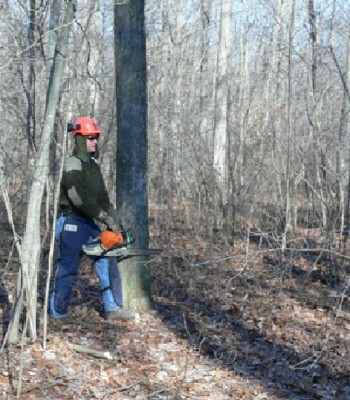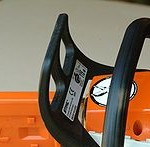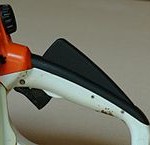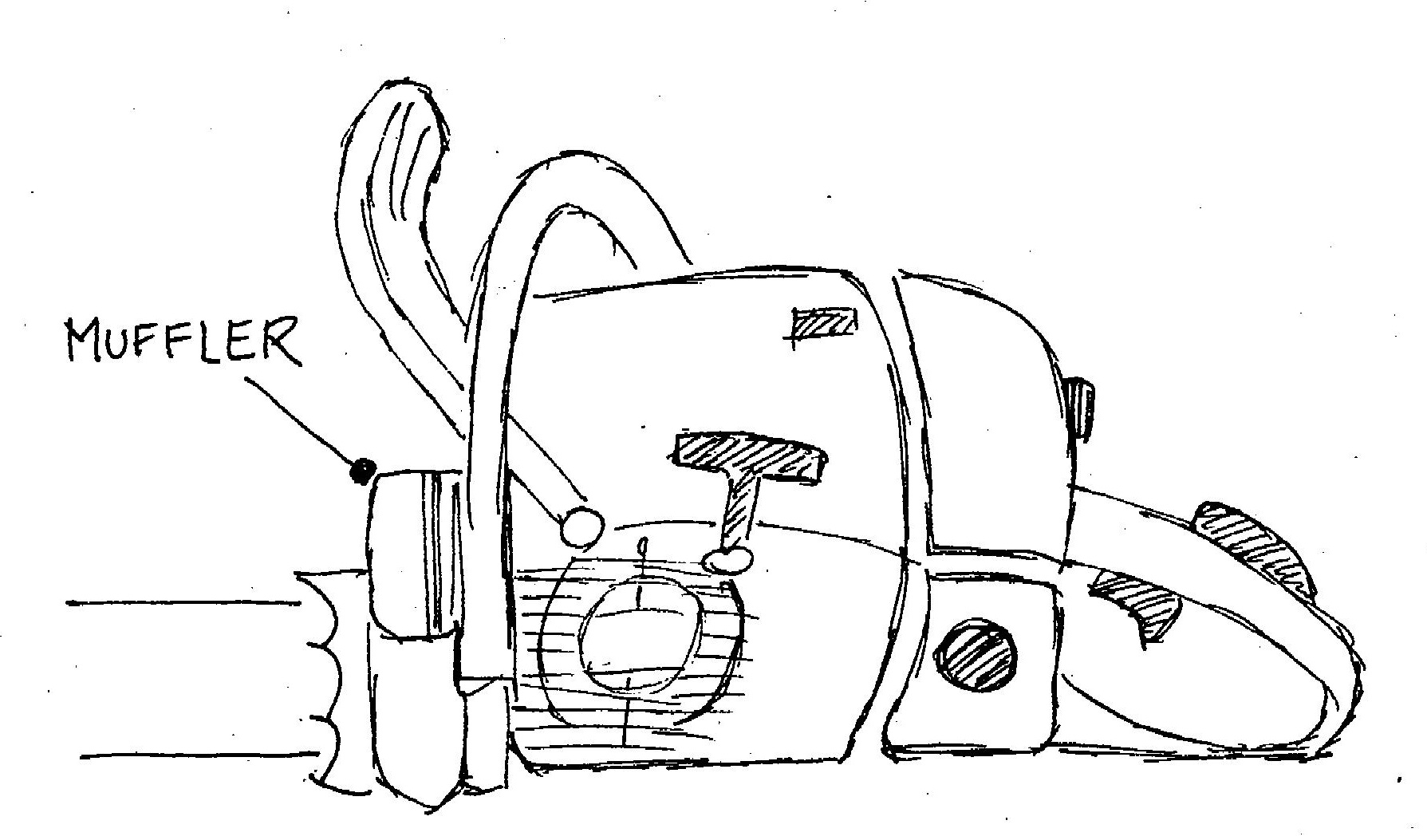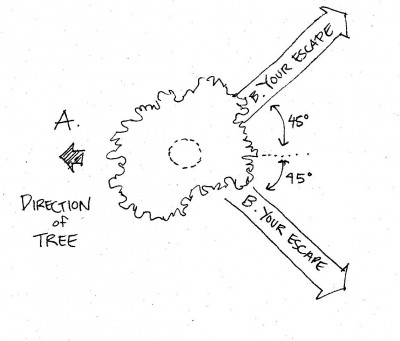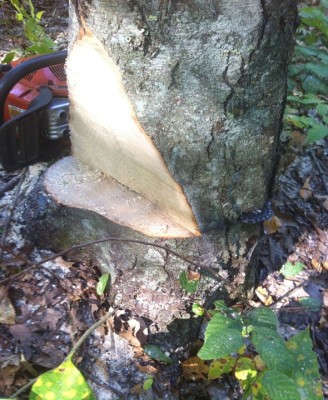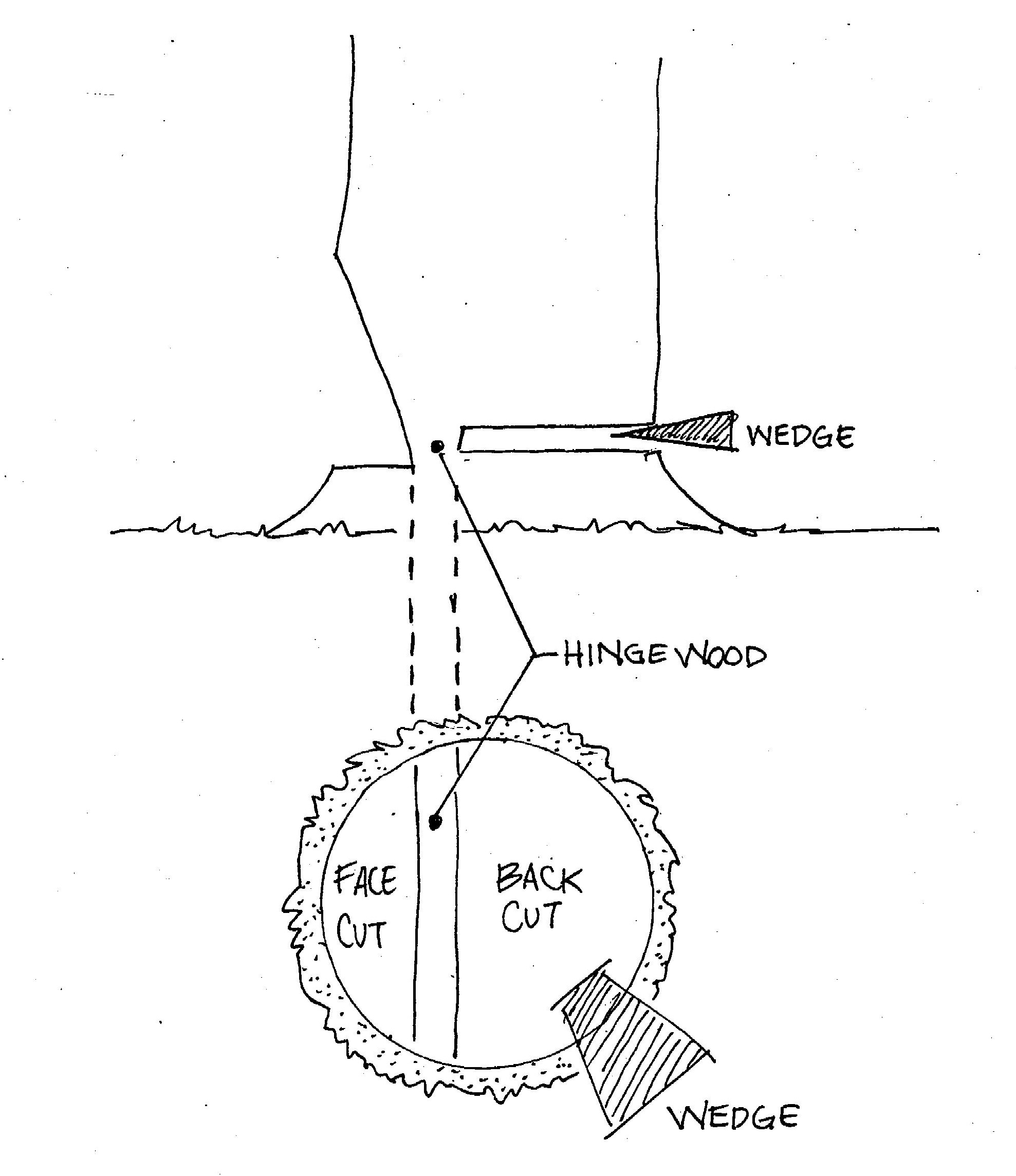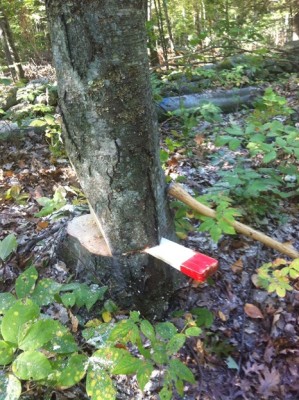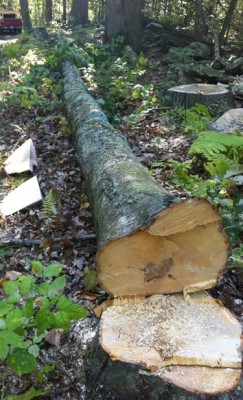The Rule of Fives*
Operating a chainsaw can be dangerous work. This page was designed as a quick study guide for the casual user and does not substitute for the owner's manual or a chainsaw safety class. The Rule of Fives, developed by foresters and professional loggers, reminds the user that there are five stages to safely cutting down a small tree (less than 12" diameter at breast height): 1) personal protection, 2) saw safety check, 3) know your surroundings, 4) the felling plan and 5) the stump plan.
1. Personal Protection
Most importantly, how are you feeling today? Don't operate a chainsaw while fatigued. Get a good night's rest and eat a healthy breakfast to help you stay alert.
The goal is to get back home in one piece.
Dress for safety:
- Leather boots with ankle protection
- UL approved chain saw chaps or leg protection
- Head protection (hard hat)
- Hearing protection
- Eye/face protection
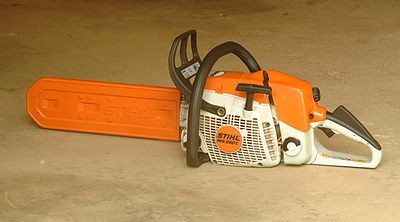
2. Saw Safety Check
The following must be present and working properly:
- Chain brake
- Chain catch
- Throttle lock
- Spark muffler
- How does the saw look overall? Is it well-maintained?
4. The Felling Plan
- Is the tree sound without excessive lean? If in doubt, call a professional.
- Determine the target or direction of fall
- Determine the side lean in relation to the target
- Determine the back lean in relation to the target
- Identify the 'bad side' based on overhead hazards or lean. This is the side you will avoid during the felling cut.
5. The Stump Plan
- Line up the direction of the face cut with the target, compensating for side lean, if necessary. The face cut determines the direction of the fall.
- Calculate the hinge dimensions: hinge length = 80% of diameter at breast height or dbh (4.5' from base); hinge thickness = 10% dbh. For example, the hinge dimensions on a 10" dbh maple will be 8" for the length and 1" for the width.
- Begin the back cut slightly above the bottom face cut line. Wedge the back cut, as needed, to counter the lean.
- Do not cut through the hinge.
- Always look up for hazards and around for your teammates before the final release!
- A tree dbh twice the length of a chainsaw bar would be best felled by a technique called the plunge cut. This is an advanced technique and should not be attempted without the proper training first. This section only covers a conventional cut.
*created by Thomas Worthley (UCONN), J.P. Barsky (CAES) and Bill Girard (Game of Logging)
